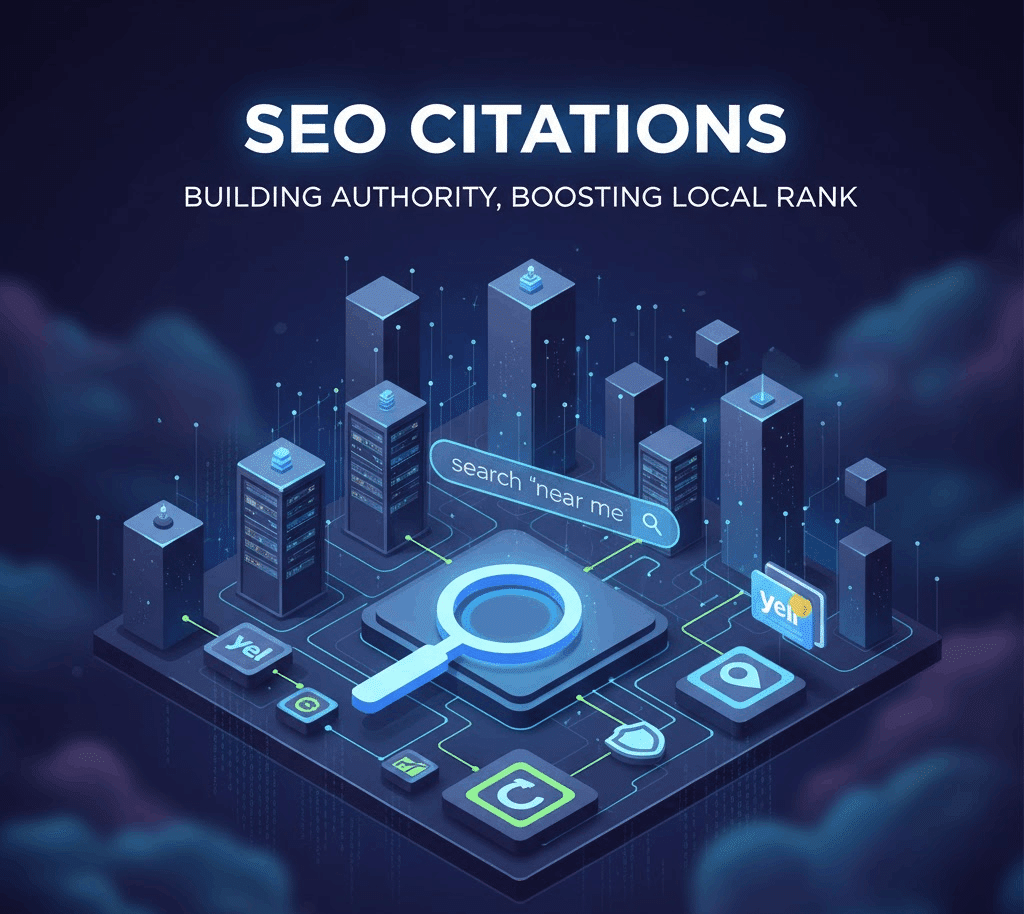Have you ever wondered what’s missing after carefully building your beautiful website and still not seeing it on search? If you’re scratching your head, wondering what citations are, don’t worry—Richard Uzelac’s GoMarketing team has gathered some information. Let’s break down everything you need to know about citations in SEO, why they matter, and how to use them to boost your local search visibility.
What Are Citations in SEO?
In SEO, a “citation” refers to any online mention of your business name, address, and phone number (commonly called NAP). They can be found on websites, apps, social platforms, review sites, and business directories—essentially, anywhere your business information is displayed online.
Think of citations like references on a resume. Just as job references verify a candidate’s credibility and history, citations in SEO confirm the credibility and existence of your business in the online world. Search engines like Google use them to determine the relevance and authority of your business in a particular geographic area.
These citations are critical for improving local SEO, as they help search engines confirm the accuracy and legitimacy of your business information. In the world of local SEO, citations play a crucial role in establishing your business’s online presence and credibility.
Types of Citations You Should Know About
There are two primary types of local citations—structured and unstructured—as well as a handful of citations published on specialized platforms such as industry-specific directories and review sites.
Structured Citations
Structured citations follow a clear, consistent format—usually found on business directories like Google Business Profile, Yelp, Yellow Pages, and Bing Places. These show your business name, address, and phone number (NAP) in a standardized way.
Unstructured Citations
Unstructured citations are more casual mentions of your business on websites that aren’t specifically designed for listings. They might not always include your full NAP, but they still help with local SEO. For example, a local news story about your business or a blog post recommending your services would count as an unstructured citation.
Other Key Citation Sources
Besides these, your business might also appear on local or industry-specific sites (like a Chamber of Commerce page or OpenTable for restaurants), social media profiles (like Facebook or Instagram business pages), review sites (such as TripAdvisor or Trustpilot), and mapping platforms like Google Maps or Apple Maps.
How to Build Citations for Your Business
Step 1: Gather Your Business Info and be Consistent
Before you start, make sure your business details are accurate and appear consistent everywhere. You’ll need your Name, Address, and Phone Number (NAP). Double-check your info down to punctuation. Even a small difference like using “St.” versus “Street” can confuse search engines.
Step 2: Create, Claim, or Verify Your Google Business Profile
The very first citation you’ll need to create is a Google Business Profile (GBP). This gets you on Google Maps and in local search results. Besides your NAP, include other relevant information like your website URL, business hours, store photos, and a brief description of your products or services.
Step 3: Submit to Major Directories
After setting up your Google Business Profile, you’re set to get your business listed on other popular directories. Sign up or log in to platforms like Yelp, Bing Places, and Facebook Business. Enter your NAP details and any additional information, such as a website link or operating hours. These listings enhance your business’s visibility and help search engines verify your information.
Step 4: Utilize local and Niche directories.
Focus on platforms that serve your specific location and industry. Local chamber of commerce websites, regional business associations, and industry-specific directories provide highly relevant citations that carry significant weight with search engines.
Step 5: Utilize Distribution Services
Working with citation management services or data aggregators can streamline the submission process significantly. These services distribute your information to hundreds of directories, though it’s important to note this isn’t a one-and-done solution—regular monitoring remains essential.
Step 6: Incorporate Review Platforms
Many review sites like Yelp, TripAdvisor, and Trustpilot display your NAP information alongside customer feedback. These platforms serve dual purposes: they function as citations while also providing opportunities to build social proof through customer reviews.
Step 7: Maintain Consistency
Business profiles on Facebook, Instagram, LinkedIn, and Twitter act as citations when they include your NAP details. Keep these profiles current with accurate contact information and utilize location tags in posts to enhance local visibility.
Why Citations Matter for Your Business
Citations play an important foundational role in local SEO. When you’re just starting out, you need citations in order to appear in local search results. According to research, citation signals account for 7% of the overall ranking factors for local SEO.
But it’s not just about quantity. The quality and relevance of your citations matter too. A citation from a well-established, industry-specific directory will carry more weight than a spammy, low-quality one.
Building local citations isn’t just about boosting your search rankings—it can also have a significant impact on your overall online presence and reputation. Having consistent, accurate citations across reputable directories can go a long way in building trust with potential customers. When potential customers see your business listed on well-known platforms, they’re more likely to view you as a credible, established business.
What are some best practices for Citations?
Keep Your Business Information Up-To-Date
Since citations provide the foundation for local SEO, correctness is paramount. If you’re moving to a new address or changing your phone number, it’s important to update your citations as soon as possible. Incorrect, incomplete, or duplicate NAP data across different citation sites can be a red flag for Google’s algorithm.
Address Duplicate Listings
Duplicate listings can dilute your SEO efforts and even lead to incorrect information being displayed to potential customers. If you come across any duplicate listings, address them promptly by either claiming the listing and updating the information or reaching out to the directory to have it removed.
Combine Citations with Other Local SEO Strategies
Duplicate listings dilute your SEO efforts and can display incorrect information to potential customers. Regularly audit your citations to identify duplicates, then either claim and update them or request removal from the hosting directory.
Final Thoughts
Building citations takes time, but the rewards are worth it, especially with the help of an SEO company. The more consistent and widespread your citations, the more search engines—and customers—will trust your business. As long as you stay consistent and accurate, you’ll see positive results in your local search rankings.
So if you’ve been wondering why your local business isn’t ranking as well as you’d hoped, take a look at your citations. With a solid citation strategy in place, you’ll be well on your way to dominating your local search results.





